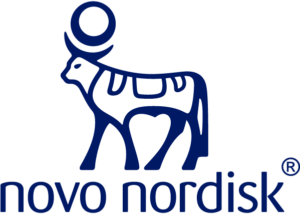“This Best Practice Guide has been created by an independent Multi-Disciplinary Team. Novo Nordisk provided sponsorship for the development and production of this guide but has had no input into the content”

Executive Summary
This Best Practice Guide offers an overview as well as the details of the opportunities and complexities associated with designing and implementing group consultations for commencement of GLP-1 RA therapy in primary or secondary care. It includes evidence and feedback from Health Care Professionals (HCPs) and People with Diabetes (PwD) to provide a comprehensive stakeholder view.
This best practice guide has been created by a multidisciplinary team

WHAT ARE GLP-1 RA’S?
People with Type 2 diabetes have many medication options to manage the disease. Most are familiar with insulin or metformin, but there’s another class of drugs that are called glucagon-like peptide-1 receptor agonists, shortened to GLP-1 RAs or GLP-1s.
![GettyImages-1245493694 [Converted]](https://usercontent.one/wp/idealdiabetes.com/wp-content/uploads/2022/03/GettyImages-1245493694-Converted-1024x758.png?media=1687957852)
The first GLP-1 RA , exenatide (Byetta) was first approved by the FDA in 2009 as a twice-daily injectable, intended to be taken within an hour of morning and evening meals. Up until 2019, GLP-1 RAs were only injectable medications when Rybelsus, the first oral GLP-1 came to market.
Different GLP-1 RA have different dosing requirements, such as:
Before Meals:
- Oral semaglutide (Brand name: Rybelsus) taken 30 to 60 minutes before meals
Once-daily injections:
- Lixisenatide (Brand name: Adlyxin)
- Liraglutide (Brand names: Victoza, Saxneda)
Once-weekly injections:
- Dulaglutide (Brand name: Trulicity)
- Semaglutide (Brand name: Ozempic)
- Extended-release exenatide (Brand names: Bydureon, Bydureon BCise)
Naturally produced GLP-1 RA’s versus GLP-1 Therapies
The natural hormone, called endogenous GLP-1 RA produced by the body is released in response to glucose. When released, it helps increase the secretion of insulin and reduce glucagon. The hormone also slows digestion and suppresses appetite signals — this helps reduce hunger and improve satiety.
Environmental
Feedback from the MDT group have highlighted special considerations for setting up group GLP-1 RA starts in terms of ergonomics and environment. These considerations need attention to promote professionalism and inclusion.
Service Delivery
This aspect has been identified as fundamental relating to whether a move to adopt group consultations for GLP-1 RA starts in diabetes care is required or possible. Group starts will lead to increased prescribing and availability of GLP-1 RA therapies for people with type 2 diabetes. Some people with type 1 diabetes will benefit from GLP-1 RA starts albeit this is prescribed off license currently and based on individual need so unlikely to occur within a group start scenario.
HCP Training Needs
Consideration of the training and ongoing support for conducting group GLP-1 RA starts needs to be available for clinicians wishing to provide this service to support the organisation, provision, enablement and evaluation of group GLP-1 RA starts in diabetes care. This also includes PwD being invited into this process (Bombard et al, 2018).
HCP Considerations
If group GLP-1 RA starts are going to be introduced for diabetes care the following factors have been identified by the MDT team.
Person with Diabetes Considerations
To undertake a change in routine diabetes care for PwD with long standing diabetes might be more problematic than introducing this service delivery with people more recently diagnosed. Also, group GLP-1 RA starts consultations need consent and understanding to manage the PwD expectations in terms of the GLP-1 therapy they are being prescribed and commencing. Choice of therapy in terms of usage, daily or weekly dosing and also tablet or injectable GLP-1 RA therapy also needs individual clinical decision making in partnership with the HCP and PwD. Type 1 diabetes GLP-1 RA starts are currently off license and do blend better with individual consultations rather than a group setting at this time.
Feedback from HCPs and PwD about group GLP-1 RA starts including the following considerations:
Group GLP-1 RA group starts do have their place in increasing prescribing and access to GLP-1 RA therapies for PwD who could benefit potentially most. Careful consideration in the organisation especially in terms of time efficiency and enabling group GLP-1 starts to avoid individuals who ned this therapy waiting too long. Use of PCN group facilities for several practices to enable a PCN wide group GLP-1 RA start could be provided with appropriate training and either virtual or face to face access. Considerations regarding travel time if the service is to be delivered on a PCN wide basis needs careful planning also. The training of HCPs and group GLP-1 RA start set ups needs careful thought and attention. This is not a one size fits all scenario and reflecting ‘No decision about me without me’ (Department of Health, 2012), the same considerations need to be applied in the PwD’s decision to potentially not engage with this group GLP-1 RA start and opt for an individual one- to-one GLP-1 RA start instead.


















